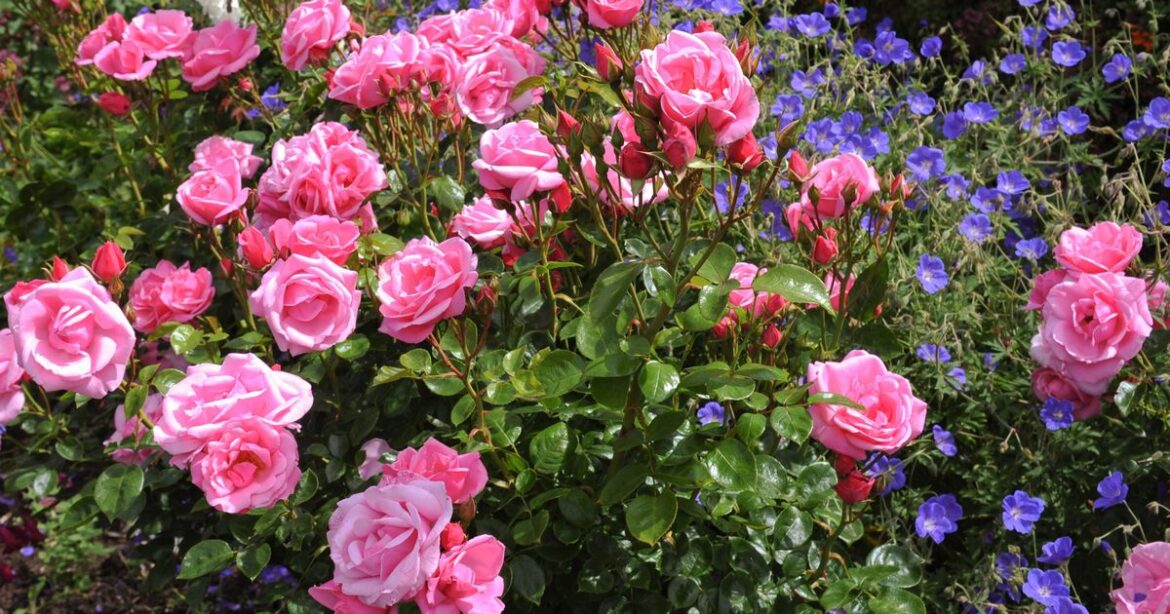Roses are a staple in many gardens, but they need a little bit of care and attention in the autumn months to ensure they bloom beautifully next year
Phoebe Cornish Senior Lifestyle Reporter and Talya Honebeek Content Editor – Spare Time
13:14, 05 Oct 2025
 Roses will be healthy next year if one task is done from now until late winter(Image: pcturner71 via Getty Images)
Roses will be healthy next year if one task is done from now until late winter(Image: pcturner71 via Getty Images)
Roses are celebrated for their extended blooming period, intoxicating fragrance, and enduring elegance. They’re incredibly versatile, flourishing in our moderate yet unpredictable weather conditions when provided with sunshine, nutrient-rich, moisture-holding yet well-draining earth, and some protection from dominant winds.
Whether climbing over archways or cultivated in containers on terraces, there’s a variety suited to every location and aesthetic, from rustic garden borders to modern courtyards.
It’s natural to consider roses as summer showstoppers, but they also provide winter framework and, frequently, hips for local wildlife. While it may be appealing to neglect roses once their final display diminishes, horticulturists are advised against becoming careless if they desire spectacular blooms the following year.
According to Andrew Mills, head gardener at Blenheim Palace, October represents the perfect moment to “tend to roses” through pruning, especially the climbing varieties, reports the Express.
It’s equally vital to secure the stems before autumn gales inflict harm. He explained: “We will be pruning down our roses by 50% in height to reduce the effects of wind rock.”
 Roses will be healthier if one task is done now(Image: Getty)
Roses will be healthier if one task is done now(Image: Getty)
Gardeners’ World also emphasises that wind rock during the colder months can disturb roots, permitting moisture to seep around the base and hinder plants come springtime.
Climbing roses are ideally pruned during autumn, following their flowering period, though it’s crucial to preserve the primary structural stems intact, unless they’re extending past their supports.
The horticultural specialists recommend to “simply prune the side shoots to four healthy buds”. When it comes to pruning climbers, always ensure to cut just above a bud that points in the direction you want the new stem to grow.
Avoid making cuts above a bud that will direct growth towards the garden path, for instance.
Gardening experts like Monty Don recommend saving the main pruning for late winter or early spring (December to February/March), when the plant is dormant and leafless, thus making it easier to see the structure.
 Forceful weather conditions can damage rose plants, particularly climbing varieties(Image: Getty)
Forceful weather conditions can damage rose plants, particularly climbing varieties(Image: Getty)
It’s important to note that rambling roses are not the same as climbers and don’t require pruning in October. The Royal Horticultural Society suggests the main pruning time to be shortly after flowering in the summer.
During autumn, the focus should be on tidying up, removing any dead or damaged stems, and securing new growth.
Miniature and patio roses, as well as shrub roses, including English/David Austin types, benefit from a light trim in October to reduce height and wind leverage, with the main pruning for shape and renewal reserved for late winter.
For those growing hybrid tea or floribunda roses, it’s best to wait until late winter to prune. However, they may benefit from a light ‘de-sail’ in October to protect them from harsh winds.
 Roses can grow leggy over time and become damaged by the wind(Image: Getty)
Roses can grow leggy over time and become damaged by the wind(Image: Getty)
Given the time of year, roses also benefit from some damage control in the form of disease prevention.
It is worthwhile removing any remaining foliage that shows signs of disease, such as black spot, mildew, or rust, when pruning your roses, according to Gardener’s World.
They also recommend gathering any diseased leaves that have fallen to the ground, as these can carry diseases from one year to the next.


Comments are closed.